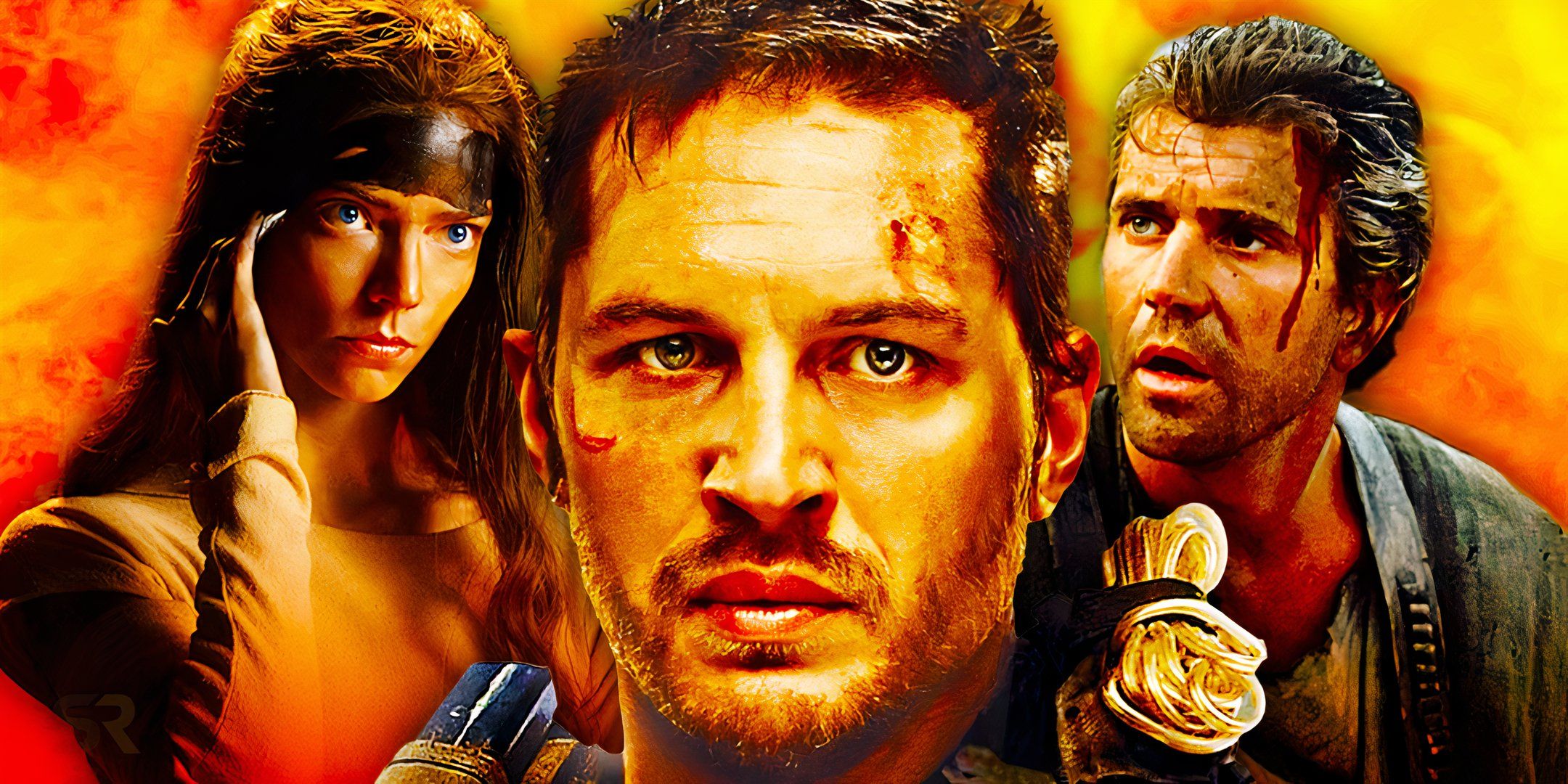
Thanks to the varied quality of the franchise and the different eras individual chapters belong to, ranking the Mad Max movies is sure to result in a different order depending on each person’s enjoyment of the films. Whether it is a fondness for the Mel Gibson era of the franchise or the more modern installments that blend CGI with mostly practical set pieces, there is no denying that greatness exists within the Mad Max franchise. There are also lower points that cannot be ignored. With many data points factored in, here are the Mad Max movies ranked worst to best.
Movie
Release Date
Critics RT Score
Audience RT Score
Mad Max
April 12, 1979
90%
70%
Mad Max: The Road Warrior
December 24, 1981
93%
86%
Mad Max Beyond Thunderdome
July 10, 1985
79%
49%
Mad Max: Fury Road
May 15, 2015
97%
86%
Furiosa: A Mad Max Saga
May 24, 2024
89%
96%
Mad Max Beyond Thunderdome
The Original Trilogy’s Conclusion
The final appearance of Mel Gibson’s Mad Max was not everything it should have been. Mad Max Beyond Thunderdome arrived when Gibson was becoming one of Hollywood’s biggest stars, long before he became a more controversial figure. The threequel had expectations to build on the excellence of Mad Max: The Road Warrior and deliver a rousing third feature for him and Miller. Instead, Beyond Thunderdome is the most uneven installment of the series thanks to what feels like competing visions.
Beyond Thunderdome is unique in the franchise as it is the only film that George Miller did not solely direct, as George Ogilvie was brought on to help Miller as he was still grieving the loss of his friend and franchise producer Byron Kennedy. The end result is the threequel feeling like a movie that Miller did not intricately plot out beforehand. The first half brings Gibson into conflict with Tina Turner’s Aunty Entity and features the excellent fight between Max and The Blaster in the Thunderdome.
It is during the second half of Beyond Thunderdome that it falters. Max becomes part of a new group that mostly features children, and the film loses a lot of the edge that the franchise is known for as a result. The beginning and ending are almost satisfying enough to help make up for what transpires in between. But with so many familiar elements of the series missing or not landing, the film ultimately is not all that fulfilling. There has to be a worst Mad Max movie after all, and Mad Max Beyond Thunderdome is the clear answer there.
Mad Max
The Movie That Started It All
The original Mad Max movie is unlike any other installment. George Miller made the movie on a minuscule budget and without knowing exactly what he was doing. The learning curve of a first-time director who had only just halted his medical career can be felt at times. But, Miller’s inexperience and if there’s a will, there’s a way attitude help make Mad Max a special entry in the series. This is the franchise at its lowest point in terms of budget and resources, and yet the director manages to still make the movie thrilling and daring.
There are some great action sequences in the film, but they are not as focused on them, and they cannot be quite as elaborate. The chance to see Max’s life as an Interceptor and with his wife and child are elements that other installments cannot offer. This makes Mad Max a much quieter, character-focused, and scaled-down adventure at times. It’s still a fulfilling journey by the end, as the seeds for what Miller really envisioned for this world become clear.
This makes it somewhat difficult to even compare Mad Max to the other movies that would follow. Miller does everything in his power to bring this world to life with the resources he has. But one can’t completely escape the feeling that there is more in his brilliant mind that just could not make it to the screen. Mad Max is a terrific starting point for the series that is still limited by its time. It’s only because the movie is as good as it is that any of the others were even made.
Furiosa: A Mad Max Saga
Furiosa’s Prequel Movie
Furiosa: A Mad Max Saga takes the franchise in a new direction by completely focusing the story around a character who is not Max Rockatansky. Anya Taylor-Joy steps into the role of Furiosa as the movie explores the character’s younger days before Mad Max: Fury Road. Following up on a movie that is heralded as one of the best movies of the 21st century is no easy task, but Furiosa ultimately proves that it is a worthy successor.
Without all the headaches that came with Fury Road, Furiosa often feels like George Miller completely unleashed. Time restraints are thrown out the window for the franchise’s longest installment, while the action goes bigger than ever before with more characters, vehicles, and CGI. This can routinely result in the film delivering brilliant moments, such as the battle at Bullet Farm or the final confrontation between Furiosa and Dementus in Furiosa‘s ending. However, the movie also could have been improved had Miller reigned in the CGI, been stricter on the runtime, and more.
Among the highlights that do come, though, are the cast. Anya Taylor-Joy replaces Charlize Theron impeccably, as she fully becomes the Imperator by the end. She doesn’t only look like Theron at times, but she even nails the voice at different junctures. Chris Hemsworth is also having a ball as Dementus, which helps make him one of the franchise’s more memorable villains. Expectations for Furiosa to exceed or match the heights of Mad Max: Fury Road were always too high, but there is still a lot to enjoy here.
Mad Max: The Road Warrior
The Original Mad Max Sequel
If the original Mad Max was Miller learning on the job with limited resources, Mad Max: The Road Warrior is him beginning to master the craft and the tools at his disposal. This is the film that ultimately feels like the blueprint for everything that would follow. The standard 1980s aesthetic of the first film is thrown out the door as the sequel completely embraces the post-apocalyptic landscape of The Wasteland. The desert dunes, fractured state of humanity, modified vehicles, and more all become major components of The Road Warrior, so much so that every film after it had to follow suit.
The Road Warrior is where Mel Gibson gets to shine as Mad Max too. This is a version of the character who has been broken and is haunted by his past, and Gibson does a great job of commanding the screen based on his presence alone. He’s not asked to say a lot, but Max’s gravitas is never not felt when he’s present. Gibson is far from the only standout of the cast, as Bruce Spence’s introduction as The Gyro Captain and Kjell Nilsson as Lord Humungus are also memorable.
It is thanks to The Road Warrior‘s story that the action becomes a much bigger element for the franchise, and Miller knocks it out of the part here. The car chases are bigger and more impressive than what was accomplished previously. The film’s reliance on practical stunts and the incredible abilities of the stunt performers involved is obvious throughout, with the third-act chase a showstopping sequence. Mad Max may have been where the franchise began, but The Road Warrior is where Miller kicks off what the series would really be about.





